More ifs and maybes than fact in 'Lost Tomb'
Published March 1, 2007
http://www.chicagotribune.com/entertainment/ny-etoff015113375mar01,1,1440666.column?coll=chi-entertainmentfront-hed
Weighing in at just two letters, "if" can still be one of the mightiest words in the language, closely followed by "maybe." Give me enough "ifs" and "maybes" and I'll have you believe - or try to anyway - that the moon is a hunk of moldy green cheese, after all.
Mountains of speculation can be perched on these two words and (yes) mischief, too, which sums up "The Lost Tomb of Jesus" (Sunday at 9 p.m. on Discovery Channel).
Already blessed with the holy trinity of controversy, buzz and star power - film director James Cameron bankrolled it - "Lost Tomb" is often fascinating, occasionally impenetrable, and almost totally unconvincing.
Thanks to a brilliant marketing campaign, the documentary's reputation precedes it. The show purports to have located the tomb of Jesus of Nazareth, along with various family members as well as Mary Magdalene and their son, Judah. It's a big claim, and for those not up on their Christian theology, here's why: On the third day after Jesus was crucified, he ascended into heaven where he's seated at the right hand of the Father. That's it - the core of the Christian faith, uncluttered by ifs or maybes. No body was left behind. No brothers (only the Gospel of Mark says otherwise). Certainly no love child. His body was supposed to have been set near a site now occupied by the Church of the Holy Sepulchre.
"Lost Tomb" nukes it all. Based on an archeological find in the East Talpiyot neighborhood of Jerusalem in 1980, "Lost Tomb" rests its claim on a tomb where a handful of ossuaries - small limestone coffins - bore the Aramaic inscriptions Jesus, Son of Joseph, Maria, Matthew, "Jose" - presumably a nickname for Jesus' brother - and in Greek, "Miriamene" for Mary Magdalene.
Some experts say the inscriptions look real, and then the conga line of ifs and maybes begins.
This elaborate edifice is built by Simcha Jacobovici, a well-known Canadian TV personality and anchor of History Channel's "The Naked Archeologist." As a TV type, he's quite amusing: With a knit cap and bushy mane, he's clearly smart, eccentric, and so enamored by the most Important Find in History that he brooks no opposition. Just 15 seconds are given to some doubting Thomases.
Why? You'll just have to read some newspaper stories to find out. Amos Kloner, the Jerusalem District archeologist who worked on the tomb back in 1980, was quoted in the Jerusalem Post this week saying the documentary's claims are "nonsense" and he's not the only one. Among the many objections, "Jesus" and "Mary" were common names, and if Jesus was poor and from Nazareth, then what was he doing in a wealthy family tomb in Jerusalem?
Most troublesome, though, is Jacobovici's assertions about the reputed ossuary holding the remains of James, another reputed brother of Jesus. "Tomb" argues that James was also buried in the family tomb, except that his ossuary was missing from the tomb back in 1980. Through forensic analysis, "Tomb" argues that a "James ossuary" owned by an Israeli antiques dealer named Oded Golan was originally there. If so, then the odds are overwhelmingly in favor of this being the family tomb - or so says "Tomb."
Unfortunately for "Lost Tomb of Jesus," Golan was arrested four years ago and he's currently on trial in Israel for forging the name "James" on the ossuary. A red flag? Not to Jacobovici or his willfully gullible supporters.
I could go on, but why bother? If "The Lost Tomb" had been prepared to consider all the evidence - pro and con - then maybe this might be a more compelling theory. (Discovery has scheduled a Ted Koppel-hosted discussion on the subject to follow "Tomb" at 11 p.m.)
Or, maybe no theory at all.
Mountains of speculation can be perched on these two words and (yes) mischief, too, which sums up "The Lost Tomb of Jesus" (Sunday at 9 p.m. on Discovery Channel).
Already blessed with the holy trinity of controversy, buzz and star power - film director James Cameron bankrolled it - "Lost Tomb" is often fascinating, occasionally impenetrable, and almost totally unconvincing.
Thanks to a brilliant marketing campaign, the documentary's reputation precedes it. The show purports to have located the tomb of Jesus of Nazareth, along with various family members as well as Mary Magdalene and their son, Judah. It's a big claim, and for those not up on their Christian theology, here's why: On the third day after Jesus was crucified, he ascended into heaven where he's seated at the right hand of the Father. That's it - the core of the Christian faith, uncluttered by ifs or maybes. No body was left behind. No brothers (only the Gospel of Mark says otherwise). Certainly no love child. His body was supposed to have been set near a site now occupied by the Church of the Holy Sepulchre.
"Lost Tomb" nukes it all. Based on an archeological find in the East Talpiyot neighborhood of Jerusalem in 1980, "Lost Tomb" rests its claim on a tomb where a handful of ossuaries - small limestone coffins - bore the Aramaic inscriptions Jesus, Son of Joseph, Maria, Matthew, "Jose" - presumably a nickname for Jesus' brother - and in Greek, "Miriamene" for Mary Magdalene.
Some experts say the inscriptions look real, and then the conga line of ifs and maybes begins.
This elaborate edifice is built by Simcha Jacobovici, a well-known Canadian TV personality and anchor of History Channel's "The Naked Archeologist." As a TV type, he's quite amusing: With a knit cap and bushy mane, he's clearly smart, eccentric, and so enamored by the most Important Find in History that he brooks no opposition. Just 15 seconds are given to some doubting Thomases.
Why? You'll just have to read some newspaper stories to find out. Amos Kloner, the Jerusalem District archeologist who worked on the tomb back in 1980, was quoted in the Jerusalem Post this week saying the documentary's claims are "nonsense" and he's not the only one. Among the many objections, "Jesus" and "Mary" were common names, and if Jesus was poor and from Nazareth, then what was he doing in a wealthy family tomb in Jerusalem?
Most troublesome, though, is Jacobovici's assertions about the reputed ossuary holding the remains of James, another reputed brother of Jesus. "Tomb" argues that James was also buried in the family tomb, except that his ossuary was missing from the tomb back in 1980. Through forensic analysis, "Tomb" argues that a "James ossuary" owned by an Israeli antiques dealer named Oded Golan was originally there. If so, then the odds are overwhelmingly in favor of this being the family tomb - or so says "Tomb."
Unfortunately for "Lost Tomb of Jesus," Golan was arrested four years ago and he's currently on trial in Israel for forging the name "James" on the ossuary. A red flag? Not to Jacobovici or his willfully gullible supporters.
I could go on, but why bother? If "The Lost Tomb" had been prepared to consider all the evidence - pro and con - then maybe this might be a more compelling theory. (Discovery has scheduled a Ted Koppel-hosted discussion on the subject to follow "Tomb" at 11 p.m.)
Or, maybe no theory at all.

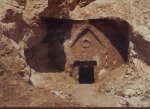
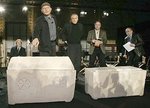






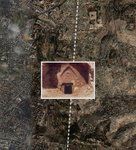


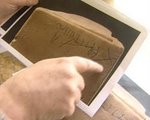






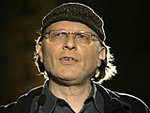

















No comments:
Post a Comment